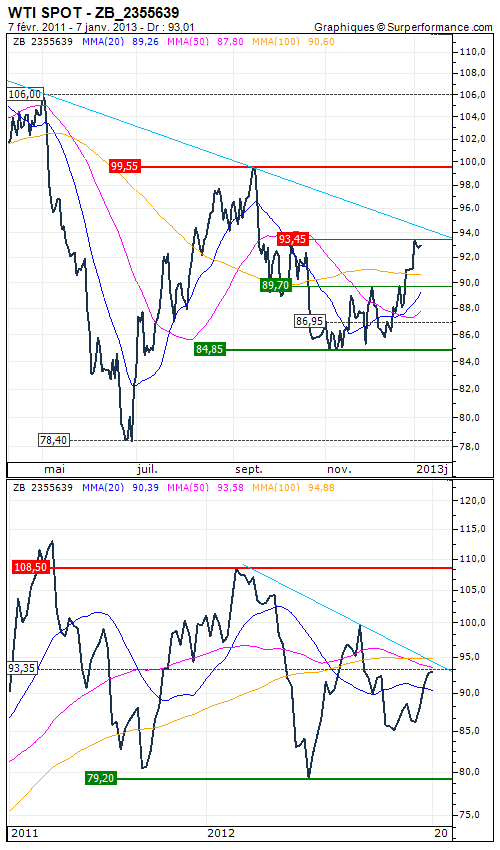WTI : Outlook for oil in 2013
By Rodolphe Steffan
It is undeniable that the sharp acceleration oil shale extraction has changed the energy market worldwide. Since 2007, the decried "fracking" technology (hydraulic fracturing) combined with horizontal drilling, has allowed to exploit the vast resources of oil shale deposits in the United States and Canada. The United States produced 6.4 million barrels of crude per day in 2012: an increase of 32% in 5 years and a record in 15 years. The International Energy Agency expects that even the United States will become the first world producer of oil in four years, surpassing Saudi Arabia and Russia, and they will achieve energy independence by 2030. They will especially enjoy the ability to export oil and at very competitive prices exerting pressure on crude prices.
However, in a globalized market, all countries remain vulnerable to supply disruption, likely to make oil prices soar up. In addition, global oil demand will continue to increase in the coming decades. This will support crude prices. The demand will increase by 14% by 2035 to reach 99.7 million barrels per day (bpd) the IEA said in its World Energy Outlook, the annual large prospective study. It is 700,000 barrels more than the agency anticipated a year earlier. The IEA, which represents the interests of consumers, is expecting an average price per barrel of crude oil around $ 125 in 2035 (in constant dollars) compared to $ 107 this year. It predicted a price around $ 120 last year.
Meanwhile, the growth in oil consumption in emerging countries, particularly in relation to transportation in China, India and the Middle East will more than offset the reduction in demand in the OECD. The Middle East will therefore remain crucial for energy supply and to meet this growing demand.
Technically, the medium term dynamics remains neutral in weekly data, crude oil prices fluctuating around 90 dollars which also refers to the 20-day moving average. A break above the bearish trend line resistance (in blue on the chart) could drive prices to $ 100 and $ 110. In monthly data, the "wait and see" behavior of investors is responsible for the long congestion between 80 and 110 dollars. We will wait the exit of this "trading range" to take bullish or bearish positions and capitalize on the new long-term movement.








